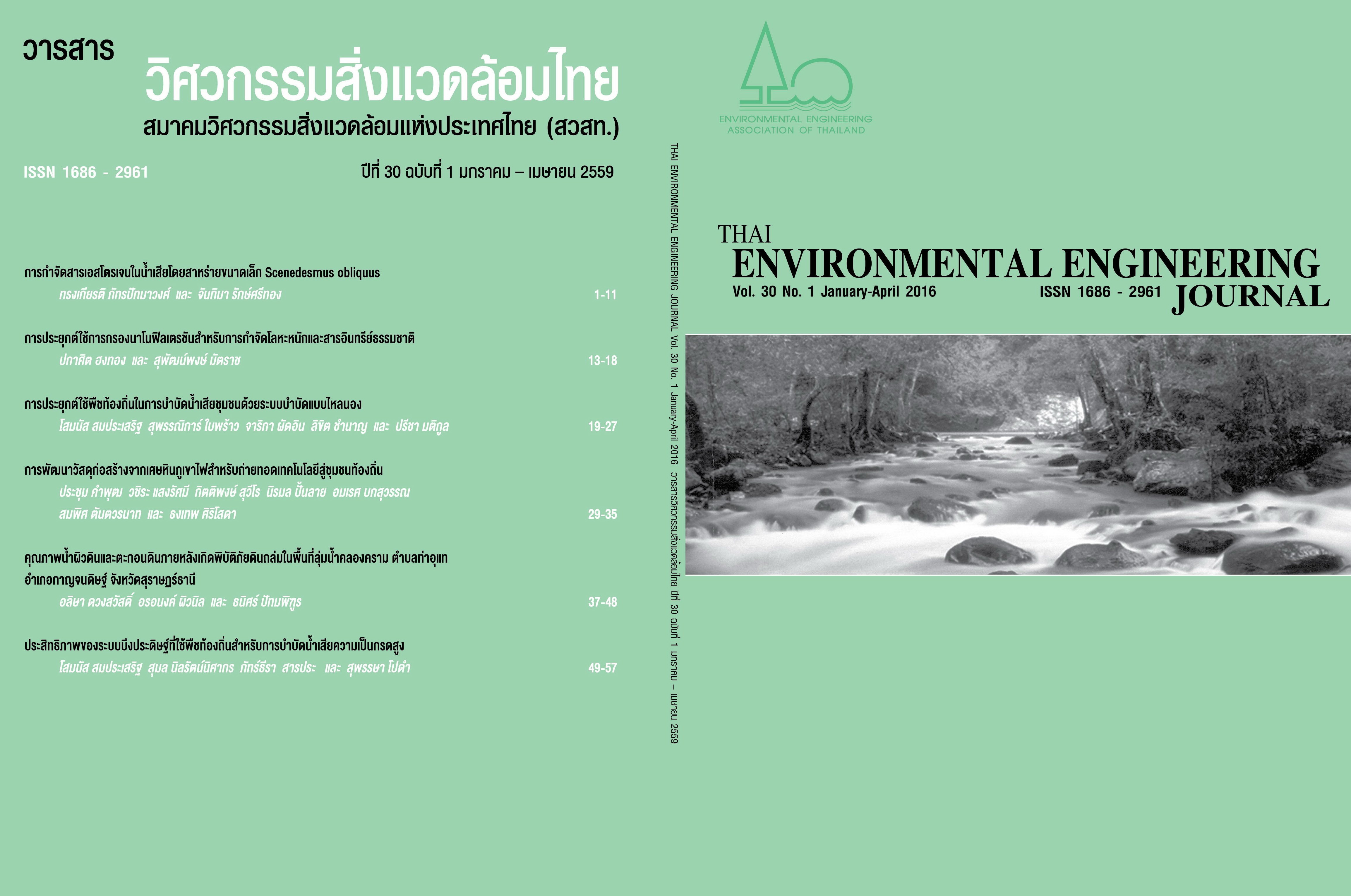Application of Nanofiltration for Heavy Metals and Natural Organic Matter Removal
Main Article Content
Abstract
This research studied the treatment of heavy metal and natural organic matter by nanofiltration using bench-scale crossflow test cell. Polyamide nanofiltration (Hydranautics NF membrane model, ESNA 1-4040) was used in this study. Experimental results showed that solutions including heavy metal (copper, manganese, iron, cadmium) and NOM had greater flux decline than the solution containing with only heavy metals. Removal performance for heavy metals increased with the solution containing heavy metals and NOM, indicating the effect of combination between positively charged metals and negatively charged NOM. Solution having iron ion caused a greater flux decline than the solution having other ions. Combination effects between heavy metals and NOM could caused a loose cake formation at the membrane surface, thus lowering flux decline. Irreversible fouling resistance (Rnon-rec) after chemical cleaning increased for combined heavy metals and natural organic matter, possibly due to reduced charge repulsion between positively charged metals and negatively charged NOM, thus causing accumulation on the membrane surface.
Article Details
References
[2] Kilduff, J. E., Mattaraj, S. and Georges, B. 2004. Flux decline during nanofiltration of naturally-occurring dissolved organic matter: Effects of osmotic pressure, membrane permeability and cake formation. J. membrane Sci., 239: 39-53.
[3] Tanninen, J., Manttari, M. and Nystrom, M. 2006. Nanofiltration of concentrated acidic copper sulphate solution. Desalination. 189: 9
2-96.
[4] Ku, Y., Chen, S.-W. and Wang, W.-Y. 2005. Effect of solution composition on the removal of copper ions by nanofiltration. Separation and Parification Tech. 43: 135-142.


